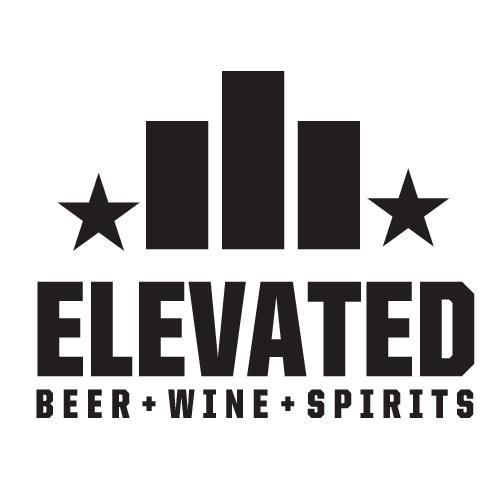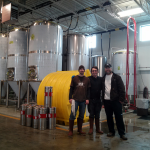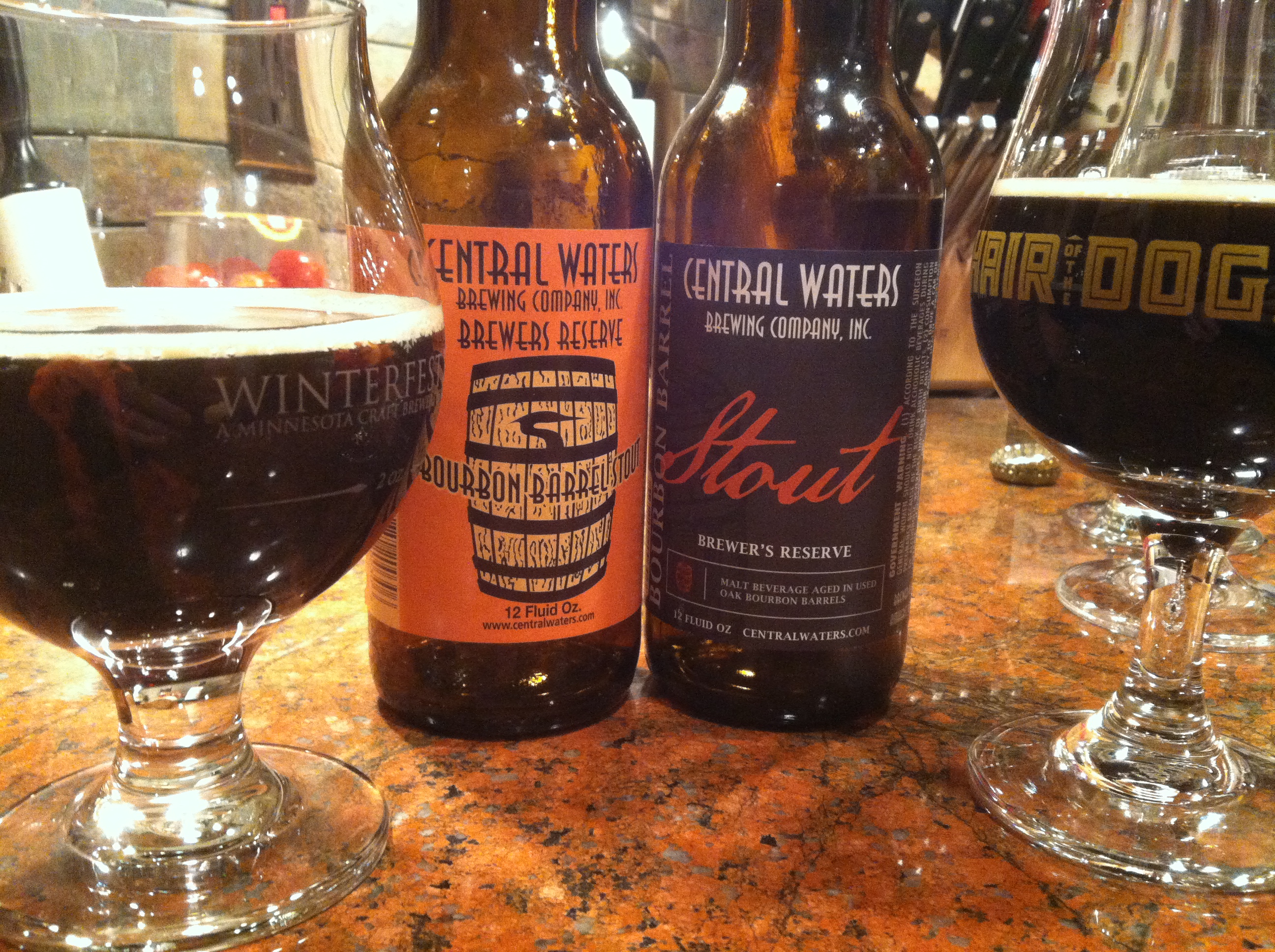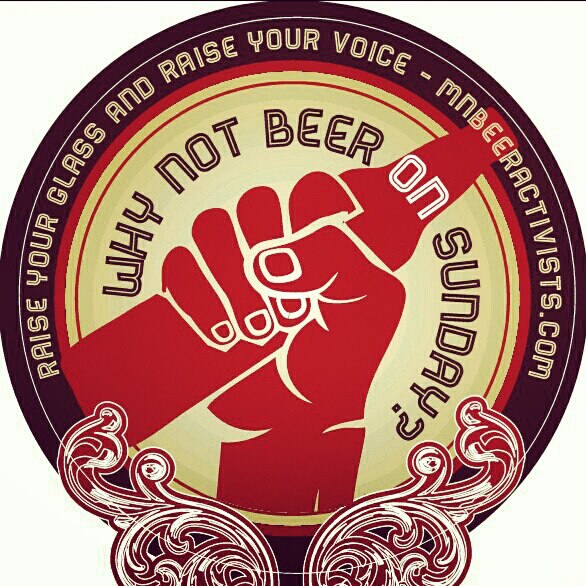We sat down with Zac & Joe to talk beer, beginnings, and what the future holds for Bad Weather Brewing.
Elevated Review: Jolly Pumpkin Fuego del Otono
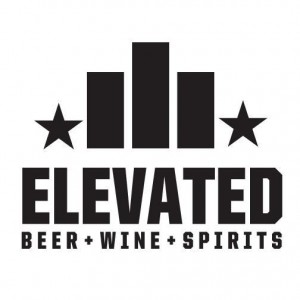 I was walking the bomber section of Elevated looking for something to feature for this review when my business partner, Ryan, suggested I do something from Jolly Pumpkin. “You’re always going on about the funk”, he joked. It’s true, I’ve been a bit of an advocate for sour ales and Jolly Pumpkin in particular since we first started developing our inventory. Full disclosure, one of my all time favorite beers is the E.S. Bam – JP’s spring seasonal, a “Hoppy Farmhouse Ale”.
I was walking the bomber section of Elevated looking for something to feature for this review when my business partner, Ryan, suggested I do something from Jolly Pumpkin. “You’re always going on about the funk”, he joked. It’s true, I’ve been a bit of an advocate for sour ales and Jolly Pumpkin in particular since we first started developing our inventory. Full disclosure, one of my all time favorite beers is the E.S. Bam – JP’s spring seasonal, a “Hoppy Farmhouse Ale”.
I remember trying to explain (giddy, mind you) what was so special about E.S. Bam to my wife the first time I tasted it. “It’s got this wild yeast… but it’s still hoppy…there’s this cute dog on the label”. Of course I failed then, not that she was very interested, but I digress.
First, a little about the brewery. Jolly Pumpkin’s beers do not contain pumpkin. Well, one of their limited releases does, but don’t out yourself as a newb to your beer geek friends by suggesting they try this “pumpkin” beer. Stick to these facts until you’ve tasted a few of your own. They are open fermented, oak-cask aged and bottle fermented.
The beer that caught my eye for this review was Jolly Pumpkin’s Fuego del Otono or Autumn Fire. The label calls it an “ale brewed with chestnuts and spices”. Other sources have called it a Biere de Garde, but I’m not sure the category matters much. My question was, what is this fall seasonal doing on our shelf in March? Did it have any business being consumed in the next 6 months? That and the fact I hadn’t tried it before was enough for me to give it a shot.
The brewery suggests storing their beers at 50F and then chilling them before serving. At Elevated, our bomber cooler is set just below 50F for storage. If you have it in your regular fridge you’ll want to take it out 15-30 minutes before serving. In general, serving warmer than fridge temperatures allows beer with more complex flavors to “open up.”
 Fuego del Otono poured an invitingly bright, orange-amber color with about one finger of white head. I tasted it in a Belgian tulip glass.
Fuego del Otono poured an invitingly bright, orange-amber color with about one finger of white head. I tasted it in a Belgian tulip glass.
The nose; I know this sounds “stuffy” but if you are new to or want to become a better taster of beer, smell it! Shove your nose in there! Breathe deep, breathe shallow, breathe deep again. Swirl it your glass and smell it again. Do whatever you need to do. Interesting beers often have complex aromas that aren’t fully perceptible on first whiff.
Anyways, as with all Jolly Pumpkin beers, this has the familiar smell of astringent funk. “Horse blanket”, “wet hay”, I just call it “funk” – in a good way. After that, I get a moderate lemon/citrus note with some subtle spice in the background.
The taste is tart citrus up front. Fairly light bodied, with medium carbonation. The tart/sour flavor gives way to a nutty base with delicate apricot and light caramel flavors as well as some savory vanilla/oak undertones. The spice to me is quite minimal, maybe a touch of cinnamon.
It finishes fairly clean and dry considering the flavors mentioned. Maybe it’s some cabin fever bias, but this beer seems right at home in the spring to summer. However, it could be different story with some more aging and I’m very curious as to what another year or two could do for this beer. For now, that bright citrus has me yearning for some sunlight and green grass. Some mixed greens with beets and goat cheese would be an excellent pairing. Or maybe some seared Ahi Tuna? Another direction would be a mushroom based pasta.
Overall, I found this to be a surprisingly tasty, versatile and complex beer that would be good now or with some aging, and one that would go well with a variety of foods.
Lift Bridge Brewing Expands
 Stillwater’s Lift Bridge Brewery has just added some new tanks to their ever expanding facility. They welcomed 3 new fermenters and 1 new bright tank to their new home yesterday.
Stillwater’s Lift Bridge Brewery has just added some new tanks to their ever expanding facility. They welcomed 3 new fermenters and 1 new bright tank to their new home yesterday.
The additional tanks will increase the brewery capacity about 35%, raising the annual output to around 5,000 barrels.
The tanks were manufactured by Newlands Systems Inc., a Canadian brewing equipment supplier.
There is still a bunch of work to do like cleaning and passivating the stainless steel. However, it shouldn’t be long before the new vessels are full of Hop Dish IPA. Mmmm, Hop Dish…..
EAT A BEER: Irie-ish Edition
Irish I was Irish. I’m about a pinch. But that doesn’t mean I can’t share in some of the grand traditions of this beloved holiday. I mean, I love the color green! I like gold! Shaleighleigh is fun to say! And of course- I love beer!
This started as just a recipe for corned beef. But then I had to go crazy and put my own spin on things.
It started with the corned beef. I just got a small tip roast and decided to go with an easy traditional recipe. And then I remembered…I had a couple pounds of Simpson barley in my brewing stash. What could I do? I had to make a quick version of malt vinegar for my brine. And I was just too lazy to go to the store for some!
Malt vinegar:
1 cup crushed barley malts
1cup white vinegar
1-2 cups beer
I crushed the barley in the food processor, releasing as much sugars as possible. I added the vinegar & beer and reduced to about half. I gradually added the other cup of beer to thin out.
I placed the beef tip into a sealable container, poured the vinegar over & added traditional pickling spices & one more beer to cover. It sat overnight. It could be done days in advance to tenderize further.
Corned Beef:
I followed the recipe below from the Internet.
I placed the 3lb. beef into a Dutch oven with the brine. I added enough water to just cover the beef. I added the packet of spices included with the beef & an extra bay leaf. Bring to a simmer.
It’s 50 mins per pound of meat. I added carrots & red potatoes on top of meat in the 2nd 50 minutes. They turned out perfect! (I opted for no cabbage.)
After the time was up, I removed the meat & let rest on a cutting board. I sliced after about 15 mins. Tender & juicy! Serve with a spicy mustard & cooked veggies.
Recipe Source
But that’s not all….
The best part of making corned beef is having leftovers for hash!!!
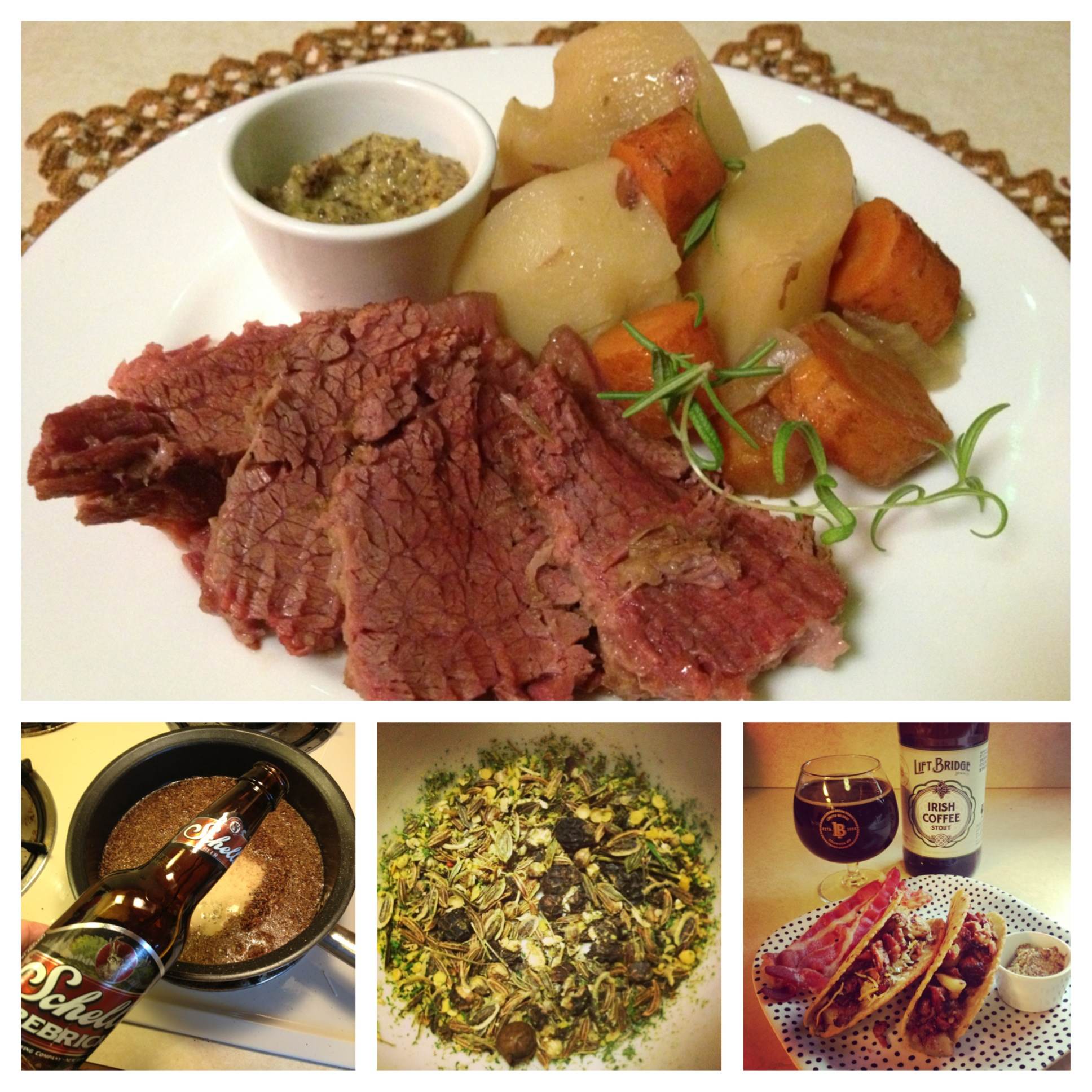
Corned beef hash:
I cut up the beef, potatoes & carrots into small bite size chunks. Added onion & jalapeño for some kick. I seasoned with season salt, crushed caraway & dill seed, and Kansas City steak seasoning. Oh- don’t forget the chopped bacon! Yum!
Cook in a skillet med-high until a nice crust forms. Keep turning until all has been fried. About 15 mins.
We got kick ass homemade corn tortillas- fried them babies up into taco shells & viola!
Served with an Irish coffee stout? Oh yeah….it was a tasty morning!!
**I used Schell’s Firebrick for the brine. I would recommend using a stout, as directed on the recipe. It didn’t give deep enough notes. But a damn good beer to drink!!
**A beautiful pairing (and beer): fresh
Lift Bridge Irish Coffee Stout & corned beef hash with bacon on the side.
Need I say more?
Reviewbicle: Central Waters Bourbon Barrel Stout
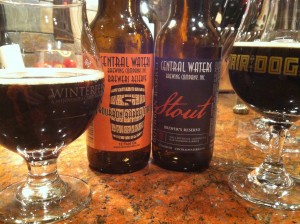
We’re glad to be back for our second month! This is really a great reason for us to start digging in our cellars and finding beer we’ve been saving for one reason or another. The debates over what to open are almost as fun as what we actually drink and, in this case, spilled into the tasting itself (no pun intended). This week we delve into an offering from our beer-loving neighbors to the East, Central-Waters Bourbon Barrel Stout. We have again decided to go with a ’10 and ’12 vintage for this review, which should highlight the development for us. So, without further ado:
CENTRAL WATERS BOURBON BARREL STOUT
Appearance (’12): The pour results in a healthy amount of light ivory head, which quickly dissipates and leaves some signs of lacing. There is very little transparency in this one; when held to the light, the color is a Black/Brown body and reveals some red edges.
Appearance (’10): The pour results in an almost indiscernible difference from the ’12 and the main difference that occurs here is in the color. The ’10 has noticeably more transparency, resulting in a lighter brown body and greater red coloring at the edges of the glass. Not sure what might cause this difference, perhaps recipe variation?
Aroma (’12): Vanilla and brown sugar are forefront and are followed by the dark fruit of raisins. The nose finishes with a bourbon smell and even a slight, but sharp, burn.
Aroma (’10): Bready grains kick things off here, with notably less vanilla sweetness; however, there is actually more dark fruit aroma present after the vanilla gave way. The bourbon burn experienced with the ’12 is still there, but not quite as sharp.
Taste/Mouthfeel (’12): Opens up with sweet flavors of vanilla, raisins and plums, but not in an overwhelming way. The sweetness has some real depth and restraint, and it isn’t cloyingly so. The sweet is entirely surpassed by bourbon and an accompanying burn. The bourbon is backed up to by some grains, which give a dark chocolate and decidedly dry finish. There is a lingering burn, as if you had just sipped some bourbon, which we suspect is tamed by the sweet dryness of the malts. The carbonation, while not visually apparent, was more evident in mouthfeel and gave a cleaner finish to the flavors. The body on the ’12 was less viscous as well and between the carbonation and viscosity, it didn’t allow flavors to linger quite as long as in the ’10.
Taste/Mouthfeel (’10): This one starts sweet as well, but more subdued, with little detectable vanilla and a shorter period of fruit flavor. The transition from fruit to bourbon is a lot smoother here, with less distance between the two extremes of the flavors as they meld. The bourbon never reaches the “in-your-face” flavor of the ’12 and has little detectable burn. The dry, chocolate flavor returns at the end, which makes it the flavor that lingers. In contrast to the ’12, a fuller body and less carbonation gives this beer the ability to linger and fade off gradually.
Overall Comparison (’12 and ‘10): Our discussion about this tasting led us to realize some important factors to consider when aging beer. Jon and I differ as to our preference between the ’10 and ’12. Jon favors the aggressive bourbon and barrel flavors present in the ’12, as he likes the assertiveness and contrast with the sweetness that defines the early part of the ‘12’s flavor. However, I prefer the monochromatic subtlety which defines the transition of flavors in the ’10. It should also be noted that Jon is a more versed and avid bourbon/whiskey/scotch drinker than myself. I do enjoy these beverages as much as the next person, but almost invariably order them on the rocks. There is also the factor that I don’t really enjoy these drinks until after the first few sips, as my palette adjusts to the burn that accompanies them. Jon likes his straight-up, and seems to relish in its’ intensity.
This leads to an important question which you should ask yourself before deciding on aging barrel-aged beers, specifically bourbon barrels: will I enjoy it more now or later? Jon and I both liked each beer, that should not be misconstrued, but we favored them at different ages. Jon will continue to age his CW BBS, but may have a few more fresh before putting them away. My plan is to continue my drink one and cellar three regimen, and most likely age them longer than Jon will.
This is what makes cellaring great: being able to evaluate and strategize your cellar contents and tailor it to your palate’s preferences. Although, that could just the beer geek in me talking too…
Cheers!
Minneapolis Craft Beer Pioneer Supports Sunday Liquor Sales
To whom it may concern,
My name is Al McCarty, and I have been an avid follower of the craft beer scene nationwide for over 20 years, and a bar industry professional for nearly twenty years. I have been the bar manager of the Blue Nile restaurant in the Seward neighborhood of Minneapolis for almost fifteen of those years, and in that role I have been a pioneer in promoting craft beer at this establishment, long before the current boom of local breweries and beer bars began.
In both of these aspects of my life, I have seen that the lack of Sunday sales of off-premise liquor and beer sales only serves to make Minnesota appear to be a backwards community. Currently, Minnesota counts among only a dozen states in the union that prohibit Sunday liquor sales. We feel proud to consider ourselves culturally, socially and politically progressive, yet we are in the same company as states such as Alabama, Tennessee, Oklahoma, Utah, Texas, and Montana. Many of these communities are our opposites when compared to politics, cultural life, and literacy. Minneapolis was recently named the #3 most literate city in the nation, behind Washington, D.C., and Seattle, Washington. And yet a literate, educated, sophisticated beer drinker in Minneapolis cannot visit a store and buy a well-crafted, sophisticated ale on a Sunday.
The local beer scene has exploded in recent years, with breweries and brewpubs popping up everywhere and striving, positively affecting the economy and the community, Yet, by law, we are still far behind. I was once visited at the Blue Nile by a man from Kansas who drove hundreds of miles for a taste of Surly Darkness Russian Imperial Stout. And yet, he reminded me, he could not walk into a store and buy a bottle in Minnesota on a Sunday, although in Kansas, he could. “What’s wrong with Kansas?” some ask? Not this.
When I point out to some people that we can’t do what some can in Kansas, I hear an astonishingly absurd reply. “Do we want to be like them?” In this case, yes, we do. We want to be like them, because we look backwards, primitive and un-progressive in comparison. In North Dakota, in Iowa, Kentucky, Louisiana, Idaho, Nebraska, and all across the United States of America, sophisticated, educated consumers have the liberty to walk into a store on a Sunday and purchase a bottle, a 6-pack or a growler for their own private consumption at home, but in educated, sophisticated, progressive Minnesota, we are denied that liberty.
We are ahead of Kansas in beer, but in this one small matter whose opposition is antiquated and absurd. Blue laws have not place in the 21st Century. This is a diverse, cosmopolitan, worldly community of many cultures, who should no longer be constrained to the rule of a conservative religious culture. The arguments against allowing Sunday sales are flimsy and baseless. “You can always plan ahead and buy on Saturday,” I hear. That’s not logic and it’s not a sound argument. Why should we have to force this upon ourselves, as consumers? Some of us do not have the luxury in our work schedule to visit a liquor store to provide for our Sunday drinking plans by checking in on Saturday. These arbitrary limitations on our liberties as consumers do not hold water. Arguments against Sunday liquor sales by those in the packaged beverage world seem to only be based on an effort to do have to go to work on a Sunday, or to not have to compete with anyone else who is willing to do so. There is simply no other industry or craft who is limited by these laws, outside of car salesmen, and none of them have any problem with opening or not opening on a Sunday.

So, ladies and gentlemen, esteemed legislators, I would hope you would consider how current laws affect the economy, as well as our communities standing among or against others in light of these same laws. Do we want to stand in the same circle as Alabama, Mississippi, Oklahoma, Utah, or Texas, despite how we appear in so many other regards, or do we want to allow for this most simple thing, the freedom to enter a store on a Sunday and buy a bottle of beer or wine for home consumption?
Yours, sincerely,
Al McCarty,
Minneapolis,
Minnesota
Stores Supporting Sunday Sales
These are stores that have communicated in some form or another that they support Sunday alcohol sales in Minnesota.
Ask your store if they support Sunday sales, and let us know!
We highly encourage you to support these stores!
Chicago Lake Liquors – Minneapolis
Dinkytown Wine and Spirits – Minneapolis
Four Firkins – St Louis Park
Liquor Boy – St Louis Park
Petschen’s Southview Liquor
Hansen’s Liquor – Stillwater
Merwin Liquors – Minneapolis
Merwin Liquors – Maplewood
Merwin Liquors – Falcon Heights
Stinson Wine, Beer, and Spirits – Minneapolis
Princess Liquor & Tobacco – Saint Paul
Maddie’s Liquor – Maplewood
Southbridge Liquor – Shakopee
Booze Mart – West Saint Paul
Pairings Food & Wine
Arbor Pointe Liquors
View Stores that support Sunday liquor sales in a larger map
An Open Letter from Mill City Distilling Company
To whom it may concern,
I am writing today to ask you to support three bills that are part of the Liquor Omnibus Bill currently before the House and Senate. These bills are essentially the Surly bill of 2011 applied to distilled spirits. Passage of these bills and modernization of Minnesota’s laws would enable growth of our new, artisan liquor distilling industry. These three bills (House: HF 940, 941, and 942; Senate: SF 623, 624 and 625) would enable a small distillery to sample their products, sell a bottle of spirit to a consumer and sell a cocktail in a hospitality room.
These bills will enable these small, local businesses to create jobs, pay taxes, support local agriculture and tourism. Without passage of these bills, it will be impossible for a home-grown Minnesota distilling industry to emulate our nation-leading craft breweries. Importantly, numerous other states (WI, OR, WA, NY, OH, IA, IL, MO, KS, GA, AR, PA, CA, etc) have passed similar legislation over the past five years that has enabled distilled spirits growth while maintaining public safety. As a neighboring example, Wisconsin has modernized its laws around distillation of alcohol and now boasts at least 9 distilleries.
A potential concern to modernization of these laws is a breakdown of the 3-tier system put in place following Prohibition in 1933. These laws were intended to protect the public from large, vertically-integrated beer companies that owned numerous saloons selling cheap beer prior to 1920. This is not the case with premium quality craft liquor and thus, is not an actual issue.
 I ask your support for these bills that will help Minnesota create jobs and tax revenues while strengthening local businesses. Thank you.
I ask your support for these bills that will help Minnesota create jobs and tax revenues while strengthening local businesses. Thank you.
Sincerely,
Bob McManus
Mill City Distilling Company


